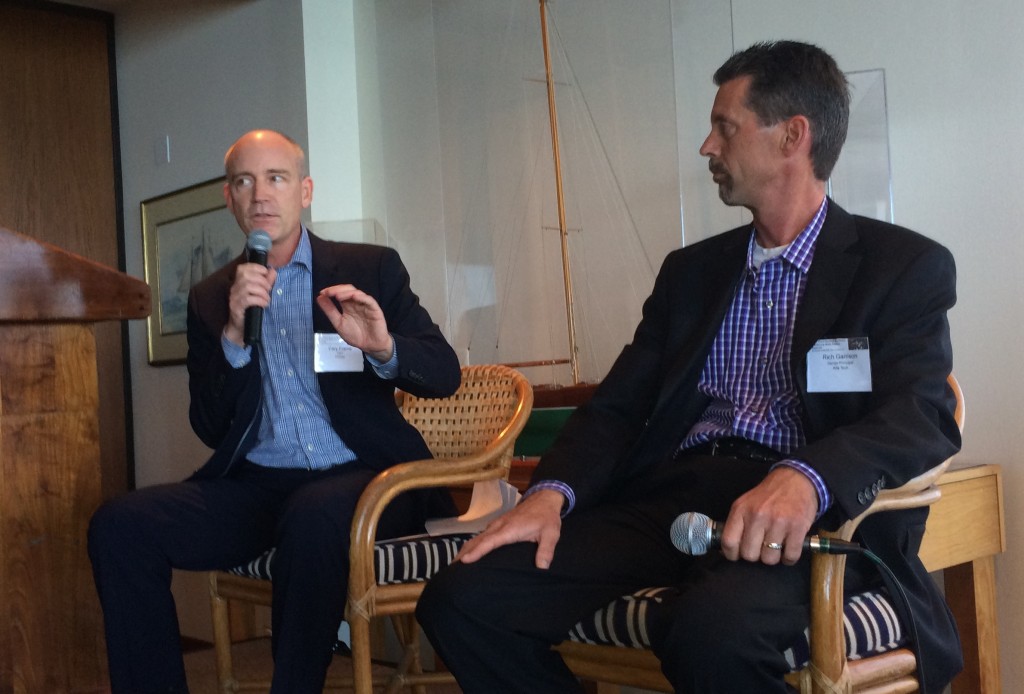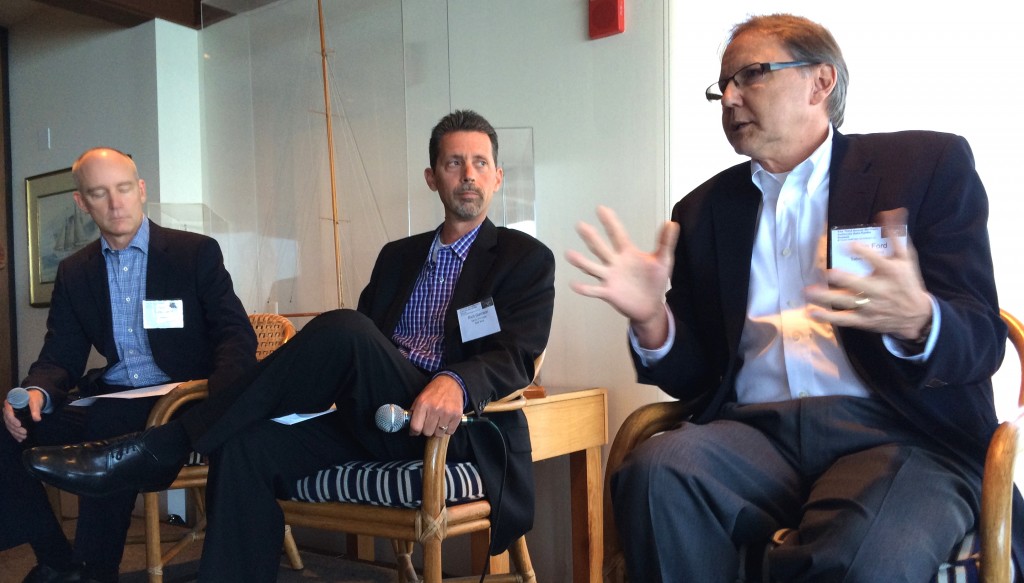Last week Polargy attended the Third Annual Northern California Data Center Summit hosted by CAPRATE. The event was held in San Francisco at the beautiful St. Francis Yacht Club overlooking the Golden Gate Bridge. Polargy’s expo table enjoyed this amazing view.
Here are my high level takeaways from the event:
- The data center industry is entering a maturation/rationalization cycle with many aspects of the industry undergoing rapid change.
- Data center location near major population centers still matters a lot because of latency & performance requirements and lingering “server hugging” mindsets among senior staff
- Demand for capacity remains high but prices/revenues are nonetheless under pressure
- Energy consumption & conservation continue to be big concerns but now we’re beginning to hear more about water consumption & conservation
- The Northern California market plays by its own rules (as always) with high energy rates, a surplus of demand, heavy regulation and long building schedules
- Surplus capacity remains rampant with IT commonly operating at 40-50% of capacity
- Enterprise outsourcing is still very low and represents a huge opportunity
Unlike other large scale industries that have matured and rationalized after 20 years, the data center industry remains fast-paced and dynamic. Not quite chaotic, but lots of moving pieces.
Because of the rapid pace of IT evolution, predicting the future of the industry is becoming both more difficult and more important if you’re an owner or operator. In light of this, the panel discussion I moderated titled Future Proofing Data Centers was certainly timely.

I very much enjoyed moderating this group of industry experts:
- Rich Garrison, Senior Principal, Alfa Tech
- John Ford, VP Marketing & Sales, Sabey Data Centers
- Brian George, Studio Principal, Corgan Associates
- Pam Brigham, Director of Global Technology, Equinix
- Thomas Weiglenda, Senior Facilities Manager, CoreSite
We discussed topics like:
- What is the expected life of your new data center?
- What is the technology planning horizon?
- Colos build a 20 year asset, yet leases run only 3 to 5 years
- Who is at the table for planning the new data center?
- What factors impact the use model/capability requirements?
- How does white space layout need to change over time?
- How does “modularity” play into getting the most of the 20 year building?
Parting words of wisdom on ‘future proofing’ from my panel:
- Flexible capacity that allows an operator to respond to market conditions is the key.
- IT density and power consumption could double in 10 years.
- Plan to swap out your large assets and build extra floor area to facilitate upgrades.
- Government regulation is a large unknown that has the potential to change the game.
- If you’re not designing for environmental constraints like water availability, you should.

A big thank you to all my panelists for dedicating time to this important topic, and to CAPRATE for organizing this event.
